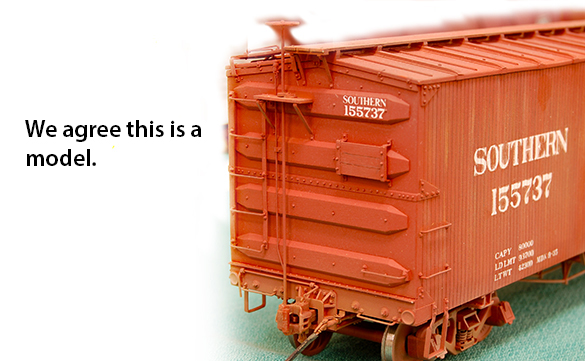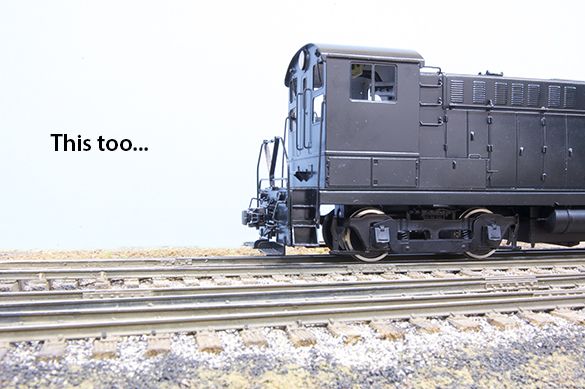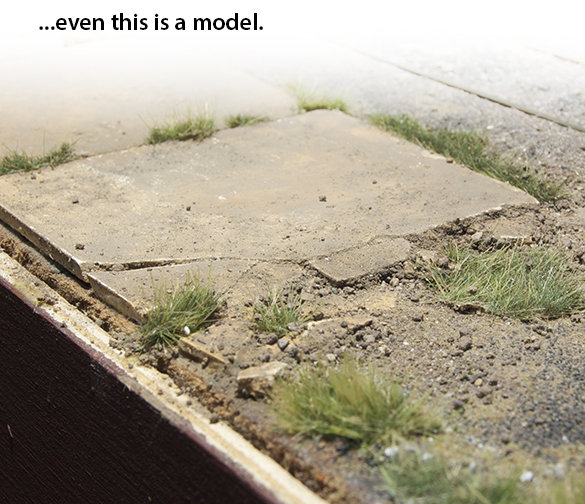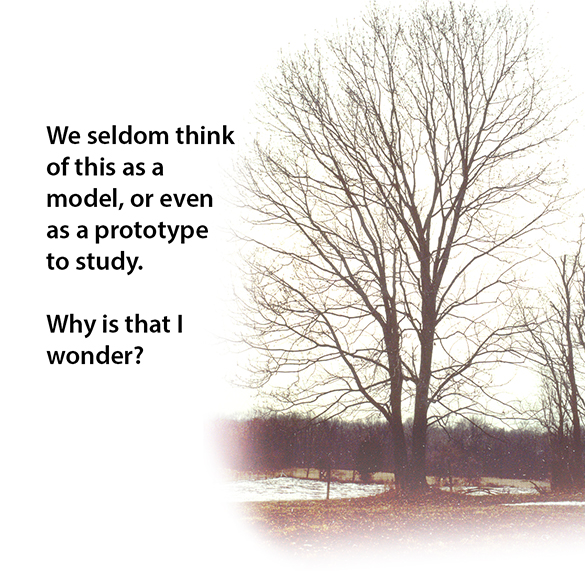I don’t have hard evidence to back it up but I have a theory.
Scenery is little more than filler for many hobbyists.
Something done because it’s expected. Something to cover up the benchwork or to keep the trains off the floor. I’m not saying it’s a universal attitude but I bet it is more prevalent than we know. Consider:
Well, we’ve been told repeatedly that the typical basement empire requires 1,453,678,980,345 trees plus a dozen more (just to be sure), or something like that. Given the fact that’s more than a handful, most people’s eyes glaze over and they desperately want the task to go away.
Nothing wrong with that basement filling empire but if that’s your goal, then you have your work cut out for you. Compromise is the watch word for big layouts. You know, the pick your battles sort of thing. It’s understandable you’d want every fast, dirt cheap and bonehead simple shortcut in the book for doing trees. Did I mention that if you want more than one layout deck, you’ll need at least 3,000,000,000,000 trees or something like that, plus a dozen more (you know, just to be sure)?
Here’s a thought. On a smaller layout, what if you treated landforms, trees and other vegetation like a model based on full-sized objects? What might that look like?
Maybe like this. Enjoy Trevor’s video (it’s hi-def, so you may have to let it load a bit or reduce the resolution on a slower connection) and TMC 09 is on sale now. Yeah now, twelve days ahead of schedule.
Regards,
Mike




I have a theory that because most of us are not good observers of reality – we take in some key points and fill in the gaps – that we end up thinking real trees are much more complicated and random than they actually are. Hence we end up looking at techniques that provide randomness, not that mimic the actual structure of trees, Possibly the random techniques work for hedgerows
I’m sat at my home office desk. To my right is my little diorama and the trees and hedge on that happen to be about the same scale distance away from me as the real trees and hedge in front of my window. There is, at best, a passing resemblance.
I can, if I want, count the main branches on the tree opposite me. There are around 50 of them all orientated fairly predictably. Oddly one of the commercial wire tree armatures I have in front of me has roughly the same number except they branch off further along each main branch so they appear more sparse. Where I think I am going with this line of thinking is that producing a more realistic tree isn’t necessarily technically difficult but require a re think about the templates we use.
We now have laser cut paper leaves available to us, I wonder if there is some way of applying them like static grass?
Lee, I don’t why your comment didn’t show up. To your point though, yes many modelers recreate signature locations like Horseshoe Curve. I submit they focus far more on the track arrangement or any building over landforms or vegetation.
As Jim points out, looking at a real tree and learning its construction and pattern is a far cry from just plopping a facsimile “thing” in place and calling it scenery.
I further submit that the influence of the mass market commercialization of the hobby extends to all aspects, including the mindset of many hobbyists.
Regards,
Mike
Mike,
I wonder though how conscious people are of having a train set mentality. I think the influence of train set thinking is long lasting and insidious. How we place buildings on a layout, how much space we leave around tracks and how we operate our layouts can all be influenced by ideas we picked up in childhood and think we have moved on from, but haven’t. Most UK exhibitions and high street model railway magazines seem to have at least one layout where the builder has tried to focus on scenics, but ended up with a terrible pastiche.. Far from seeing the scenery as a filler they would say they think scenery is very important. The worst case scenario is a layout stuffed with readily recognizable kits and an improbable number of cameos scenes, but the truth is many of us suffer from it in a less extreme fashion.. One example from my own diorama is that the weighbridge in the goods yard in a highly unlikely position.because I thought I could just squeeze it in.
Regards
James
I agree James. People imitate what they see in the popular magazines. Only a handful of modelers innovate and take things in new directions such as the late Rev. Peter Denny. Barry Norman and Gordon Gravett with scenery and on this side, the late John Allen and Allen McClelland.
Here in the States things seem to run in ten to twenty year cycles. Something becomes popular, everyone jumps on the bandwagon until it turns into a cliche’ and then it starts again with something else.
Most follow, very few lead.
Regards,
Mike
From Lao-Tzu:
“To lead the people, walk behind them.”
More usefully for hobbyists:
“When I let go of what I am, I become what I might be.”
Simon